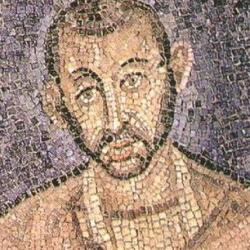
Judaism: A Tapestry of Traditions
Judaism is a diverse religion with several denominations and various shades of belief and practice. As a consequence, there is not a singular path to becoming a Jew. Some denominations, like the Conservative and Reform movements, are quite open to converts. Others, like Haredi and Modern Orthodox Jews, are somewhat less receptive to non-Jews converting—and have a much higher standard which must be met prior to conversion. Thus, one can only speak in generalities. However, there are a handful of common practices in relation to how one becomes a Jew, and some version of these appear in most Jewish traditions.
Self-Introspection and Commitment
Because being Jewish is about one’s spiritual identity and even one’s entire lifestyle, those considering conversion are typically encouraged to engage in deep and genuine self-introspection to ascertain exactly why they wish to convert, and to make certain they are fully committed to this new life and way of being. Orthodox denominations (and some progressive traditions) typically organize a beit din, which is essentially a rabbinic “court”—usually made up of three persons knowledgeable about Jewish law and theology. (One of these persons is typically a rabbi.) The three members of this “court” make sure the potential convert is fully aware of the commitment he or she will be making, is ready for the challenges that may be faced because of conversion, and that he or she is truly converted to the beliefs of Judaism.
Kabbalat Ol Ha-Mitzvot
In the most observant denominations, converts will be asked if they are committed to kabbalat ol ha-mitzvot—meaning the “yoke of the commandments.” In essence, they are being asked how committed they are to live the life of a “good Jew” which, in the Orthodox denominations, can be a demanding and even sacrifice-filled lifestyle. While this same question is typically asked in the less observant denominations, the expectations and commitment are much less because progressive Jews have fewer mitzvot (or commandments) that they are expected to live. Of course, life as an Orthodox Jew is quite different than the day-to-day lifestyle of a Reform Jew. Thus, the commitment expected of a convert, and what a beit din would seek to know about a person before they are allowed to convert to the faith will be different in the various Jewish traditions. So, for example, Orthodox Jews would not traditionally allow someone to convert simply because they wish to marry a Jew. However, more progressive denominations often accept conversion simply for the sake of marriage.
Rites of Conversion
In the more observant traditions, rites associated with conversion are more set-in stone, as compared to the less observant (or “liberal” denominations), who frequently allow a variety of practices or rites as a means of marking and celebrating one’s conversion. However, one element of conversion that nearly every Jewish rabbi requires of men who wish to convert is brit milah (or circumcision). Since God introduced circumcision to Abraham as the token of the covenant, all Jewish males are required to be circumcised. Many rabbis feel that even a man who was circumcised at birth should still have blood drawn from the penis—as part of the conversion rite—specifically because the original circumcision was not for religious purposes. This post-circumcision drawing of blood is called hatafat dam brit and consists of a rabbi or mohel pricking the penis with a pin so that the male convert has symbolically been “re-circumcised” in order to be part of the faith that God revealed to Abraham. While some progressive rabbis will give already circumcised males a choice as to whether he engages in hatafat dam brit (as part of his conversion), Haredi and Orthodox rabbis will almost always require this of men who wish to convert. The beit din (or rabbinic “court”) is not typically held for a potential male convert until after his brit milah or hatafat dam brit has taken place, as this is a test of his commitment to the Jewish faith and to conversion—his being willing to endure something painful like this before knowing if he will be accepted into the Jewish community.
Tevilah: The Final Step
If the beit din determines that the person requesting membership in the Jewish faith is genuinely converted and committed to the faith, the individual will engage in tevilah, which is the act of immersing oneself in a mikveh, or ritual immersion pool. This carries a number of connotations, contingent upon the denomination. Generally, the tevilah is symbolic of the death of the “old person” (or one’s pre-conversion self) and the birth of a “new person.” The immersed convert is understood to be forgiven of past sins and is now part of a new community. In many ways, the tevilah has purposes not unlike Christian baptism, and many scholars believe that the Christian rite of baptism was actually borrowed from the Jewish tevilah rite.
Embracing a New Identity
Once emerged, and now officially a Jew, the convert takes upon himself or herself a new name—a Hebrew name, symbolic of their new Jewish identity. Traditionally, all converts are now understood to be ben Avrahm (a “son of Abraham”) or bat Sarah (a “daughter of Sarah”)—and part of am Yisrael (or “the people of Israel”). As they move forward in their new life, the faithfulness of Abraham and Sarah are models of how they should live, filled with faith, willing to sacrifice, and dedicated to God in all aspects of their new life, as part of God’s “covenant people.”
11/20/2023 7:24:56 PM











